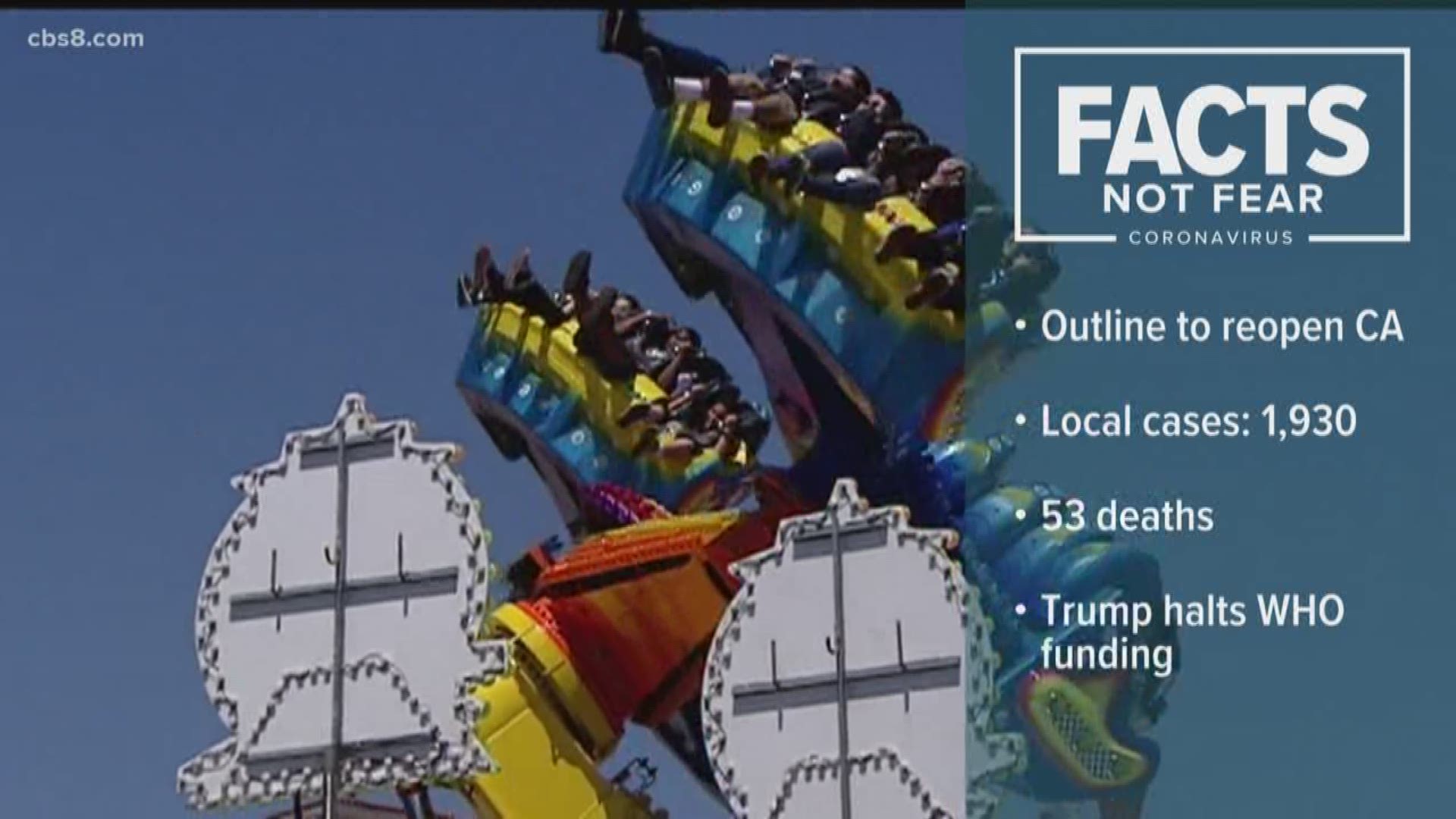SAN DIEGO —
San Diego Mayor Kevin Faulconer discussed the next phase of Operation Shelter to Home at a media briefing Tuesday. Faulconer was joined by Alpha Project President and CEO Bob McElroy and Father Joe’s Villages President and CEO Deacon Jim Vargas. Their organizations are two of three service providers assisting clients at the San Diego Convention Center.
The city has so far relocated hundreds of homeless individuals from shelters into the San Diego Convention Center to provide safe and sanitary living conditions amid the novel coronavirus/COVID-19 pandemic.
According to the mayor, the next phase which started over the weekend includes outreach teams working to bring people living on San Diego streets into the convention center. Since Friday, more than 85 unsheltered individuals have reportedly moved into the convention center.
The outreach teams are engaging with people who live outdoors offering them shelter dependent on their condition. Some are being moved to the San Diego Convention Center while others are going into motel rooms.
Operation Shelter to Home launched on April 1 moving individuals in local shelters into the convention center to allow for physical distancing. The program aims to prevent the further spread of COVID-19 in San Diego. According to Mayor Faulconer, the program also allowed for a centralized staff to work efficiently as shelters experienced staffing challenges related to the pandemic.
Anyone with a chronic health condition has been moved to hotel/motel rooms or into or into Father Joe’s Paul Mirabile Center in order for them to receive care from medical support staff.
The mayor said precautionary measures are being taken at the convention center to prevent the spread of the virus including proper hygiene, sanitation and health monitoring. Anyone entering the shelter for the first time is screened for symptoms of any illness and clients and staff are screened daily with a temperature check and verbal questionnaire. Everyone re-entering the shelter at the convention center is instructed to wash and sanitize their hands.
Anyone with COVID-19 symptoms is evaluated by a county public health nurse or another medical professional to determine if they need to be transferred to an on-site isolation area, off-site isolation location or a medical treatment facility.
----------------------------------
RELATED: Governor Newsom reveals roadmap for easing COVID-19 stay-at-home orders to reopen California
View all News 8 coverage of coronavirus / COVID-19
News 8 has joined forces with The San Diego Foundation to raise immediate, emergency funds for our most vulnerable neighbors in need. Here is how you can help.
We also have a Frequently Asked Questions page we will continue updating with the latest information and reports.
Click here to watch "Facts Not Fear," a News 8 Special on coronavirus from March 26, 2020.
BACKGROUND
According to the CDC, coronavirus (COVID-19) is a family of viruses that is spreadable from person to person. Coronavirus is believed to have been first detected in a seafood market in Wuhan, China in December 2019. If someone is sick with coronavirus, the symptoms they may show include mild to severe respiratory illness, cough, and difficulty breathing.
Currently, there is no vaccine, however, the CDC suggests the following precautions, as with any other respiratory illness:
Know how it spreads
There is no vaccine
The best way to prevent illness is to avoid being exposed to the virus
It is thought to spread mainly from person-person between people in close contact
And believed to be spread by respiratory droplets produced when an infected person coughs or sneezes
Protect yourself
Wash your hands with soap and water for a minimum of 20 seconds
If soap and water aren't available, use hand sanitizer that contains at least 60% alcohol
Avoid touching your eyes, nose, and mouth
Avoid close contact with people who are sick
Put distance between yourselves and others
Protect others
Stay home when you are sick
Wear a facemask if you are sick
Cover your cough or sneeze with a tissue, then throw the tissue in the trash
If you don't have tissue, cough or sneeze into the inside of your elbow
Immediately wash your hands after coughing and sneezing
Clean and disinfect frequently touched objects and surfaces using a regular household cleaning spray or wipe
You can find information on disinfecting and cleaning on the CDC's How to Protect Yourself page.
The California Department of Public Health has issued guidance on the use of cloth face coverings to protect against the spread of the novel coronavirus COVID-19.
The County of San Diego has made face coverings mandatory for those working with the public including grocery stores, pharmacies, gas stations, convenience stores, and similar businesses.
While officials say these face coverings are not a substitute for practices like social distancing and handwashing, there is evidence to suggest that the use of cloth face coverings by the public during a pandemic could help reduce disease transmission. Officials do not recommend the public use N-95 or surgical masks which are needed by health care workers and first responders.

